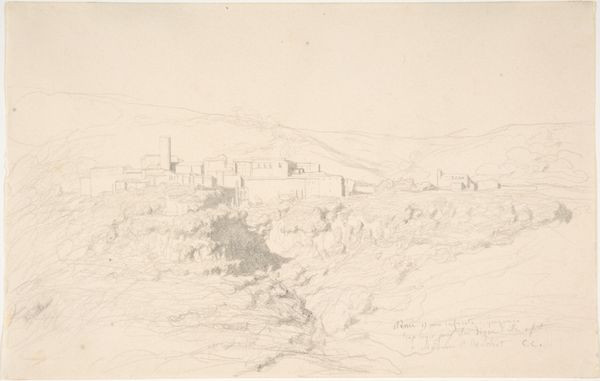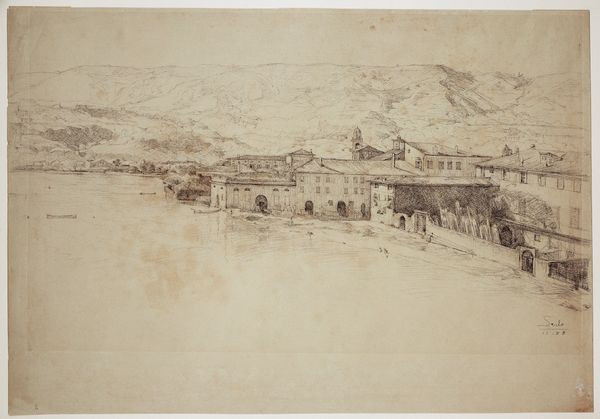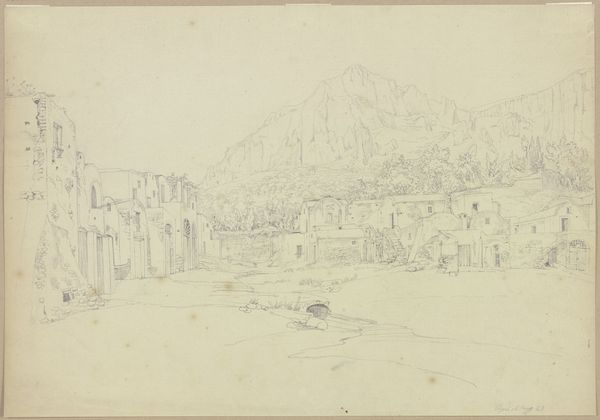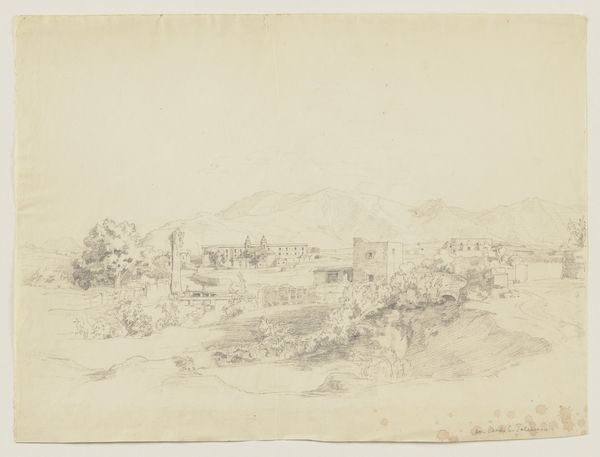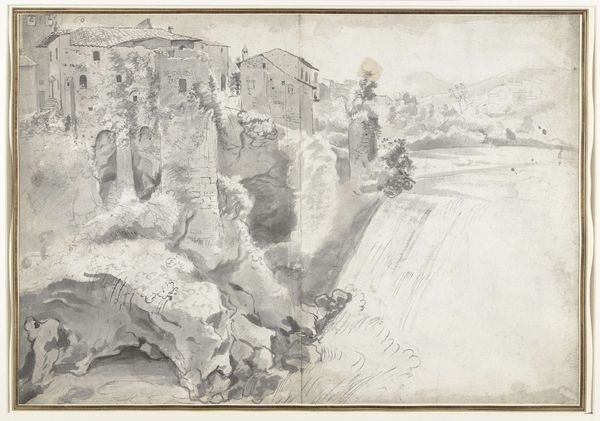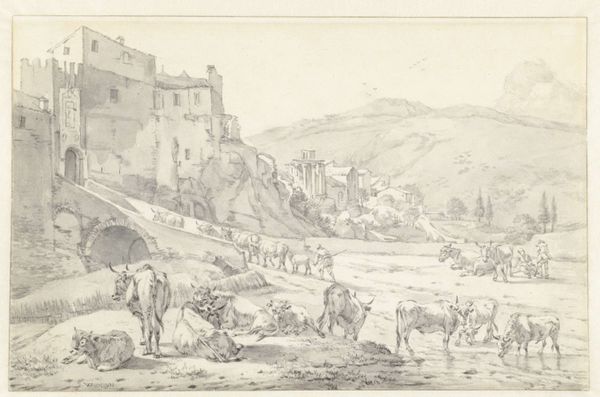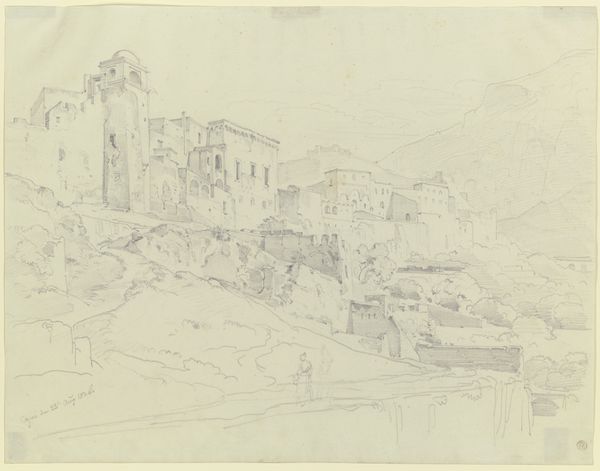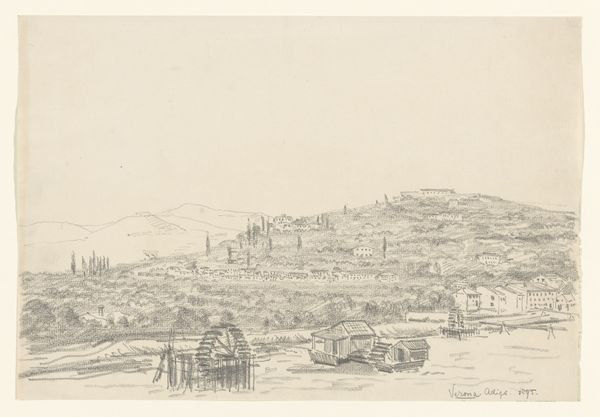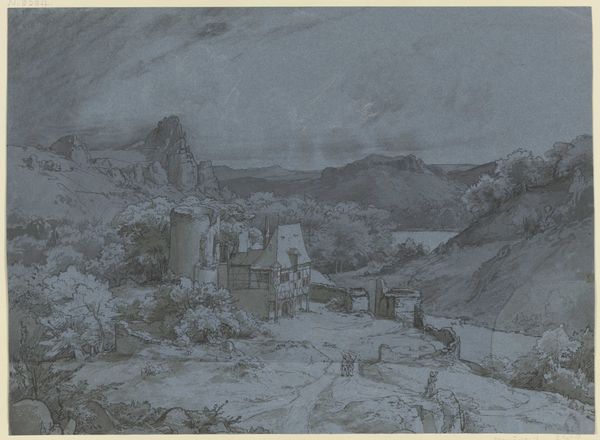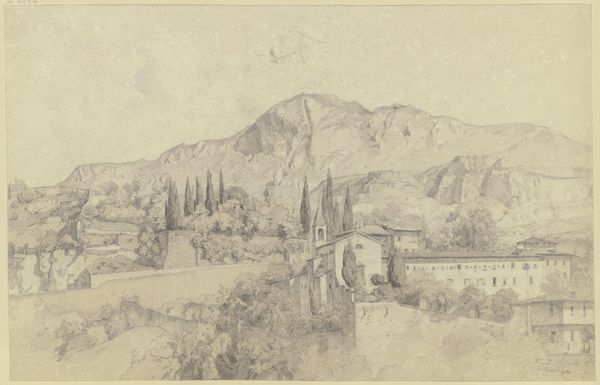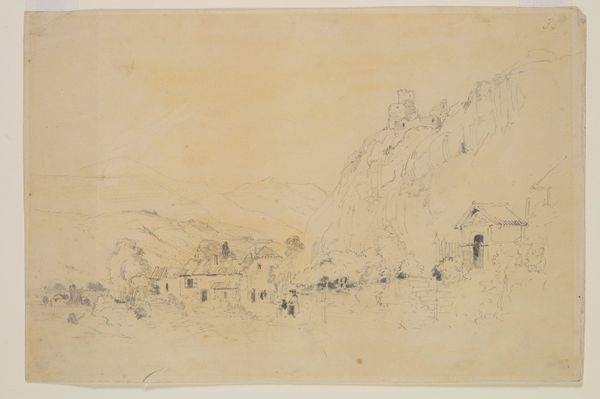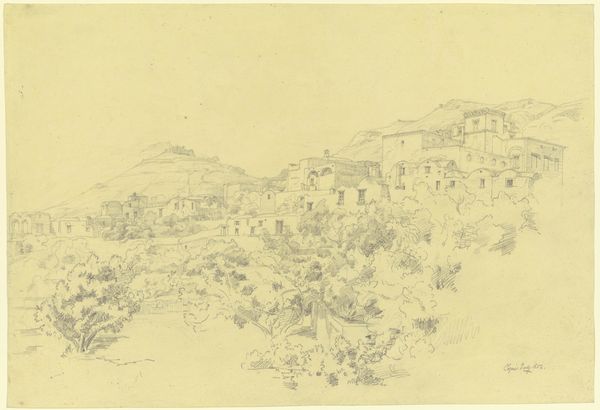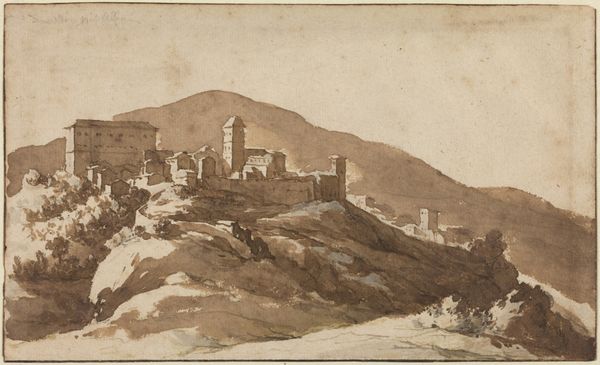
Copyright: Public Domain
Editor: Looking at this landscape drawing of "Cuenca" made around 1850 by Karl Peter Burnitz with pen and pencil on paper, it’s striking how the city seems to grow directly out of the rocky landscape. It’s almost dreamlike, especially with the limited tonal range. What do you see in this piece? Curator: Well, this work is incredibly evocative. Consider the Romantic era's fascination with the sublime. Artists were turning to untamed landscapes, not just for beauty, but to capture a sense of awe and even fear. How does this depiction of Cuenca fit into that historical context of artists searching for raw, untouched beauty? Editor: That's a great point, and I definitely see how that search for the untouched is related to this somewhat rough and ready approach with pencil and pen. There's something appealing about the directness of the mark-making, as if Burnitz was keen to capture something fleeting, and to do so immediately. Would this drawing have been made for an audience beyond Burnitz himself, do you think? Curator: Certainly! Remember the role of travel and tourism in the 19th century. Artists frequently created sketches like this as preparatory studies for larger paintings or as souvenirs for travelers. Were these images merely documentation, or did they contribute to shaping how Europe perceived these places? Consider what this image communicates about the character of Spain and the relationship of Spanish people to their built environments. Editor: So, this drawing then operates on multiple levels; a personal artistic expression and as a contribution to broader narratives about culture, travel, and representation of place? Curator: Precisely! It allows us to understand Burnitz's artistic choices in relation to larger societal trends and power dynamics. Editor: I hadn't considered its potential implications beyond aesthetic appreciation. This has really reshaped how I understand landscape drawings, from seemingly innocent observations to participants in a much bigger cultural conversation. Curator: Exactly! It encourages us to consider whose perspectives are privileged and how art reflects the sociopolitical climate.
Comments
No comments
Be the first to comment and join the conversation on the ultimate creative platform.
